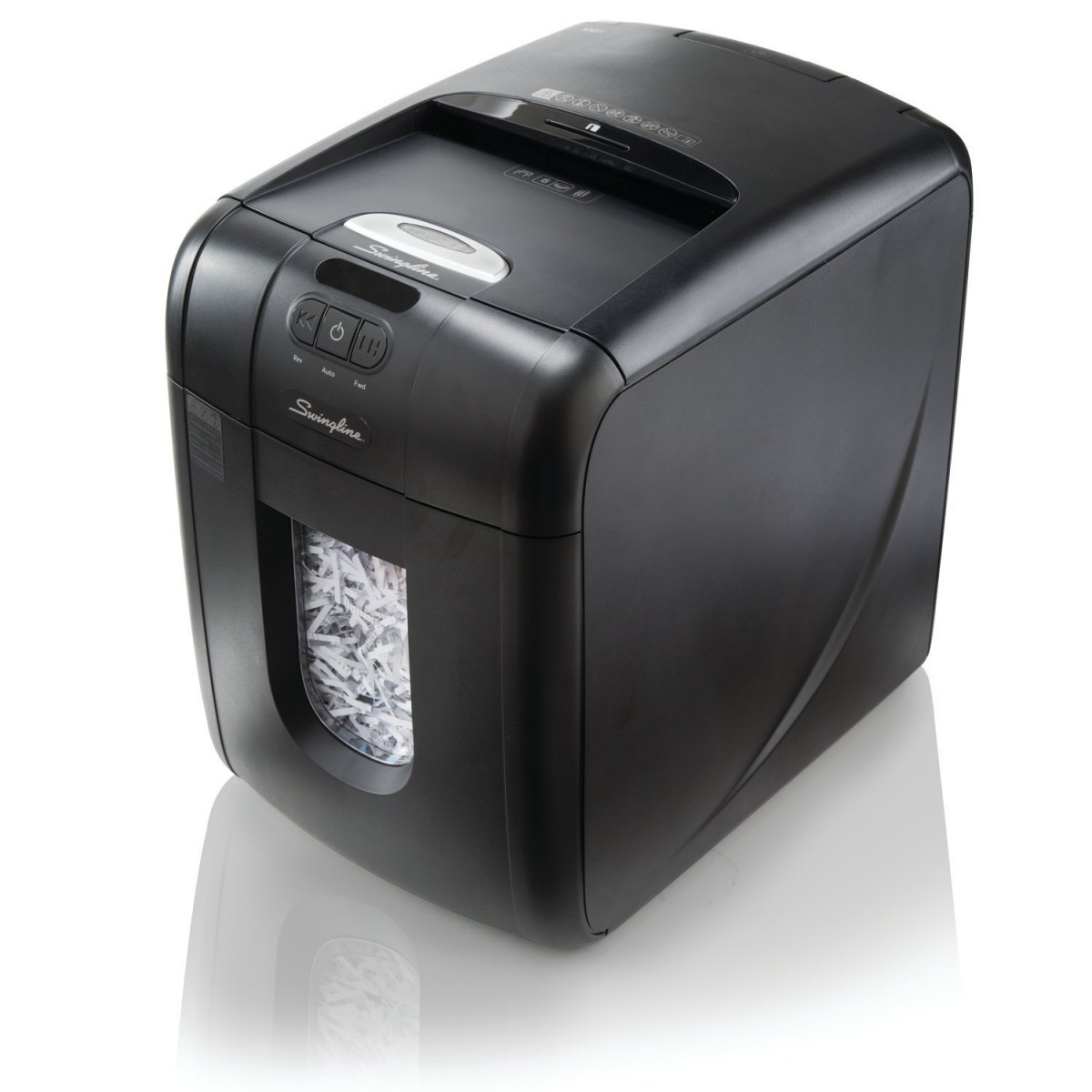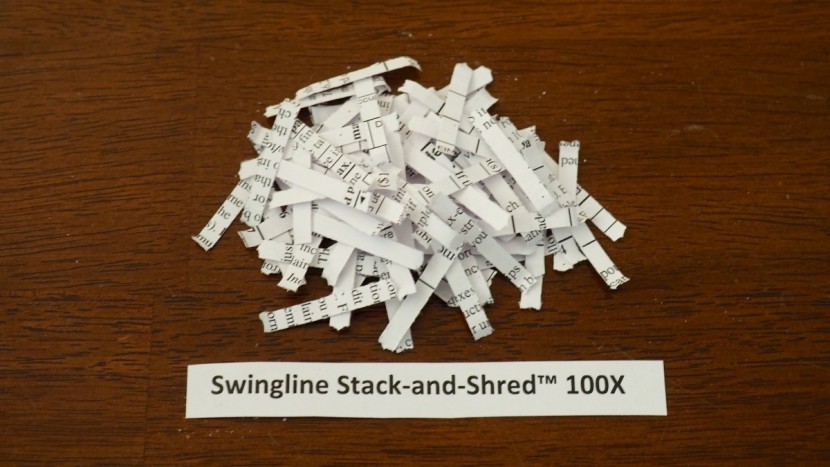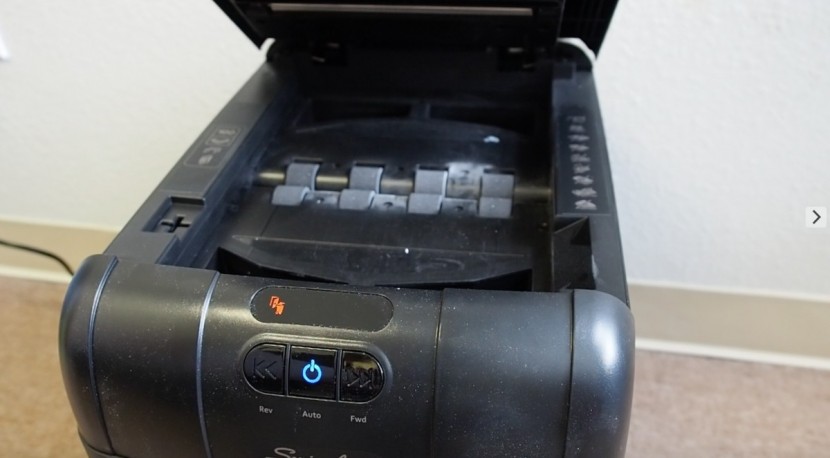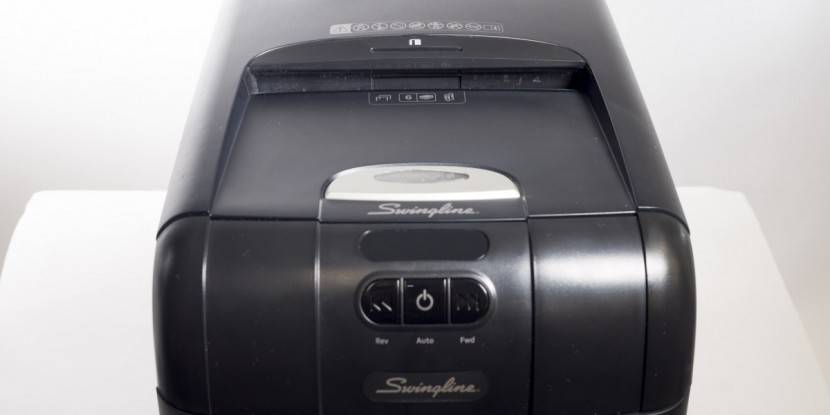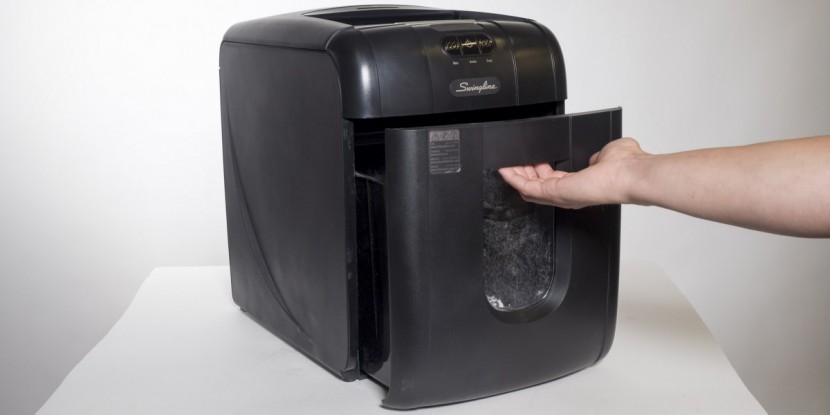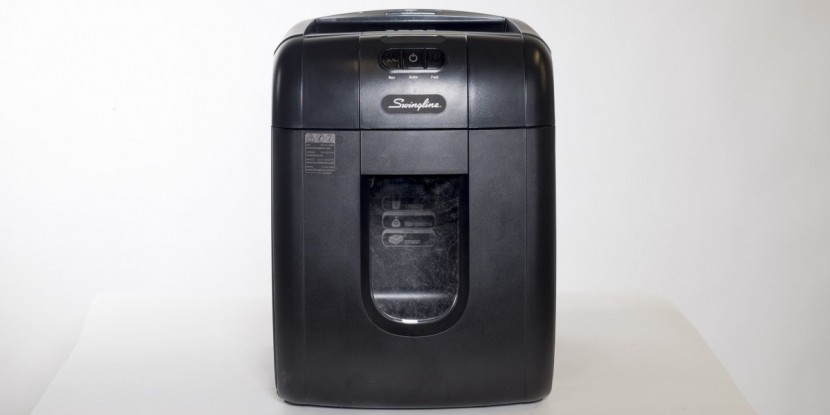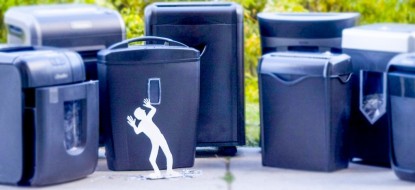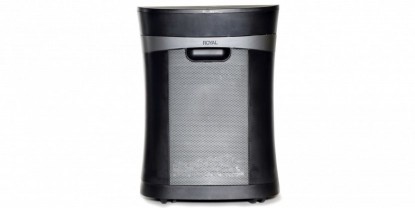Swingline Stack and Shred 100X Review
Our Verdict
Our Analysis and Test Results
Shredding Quality
The Stack-and-Shred earned the worst score of 4 in our shredding quality testing, putting it well off the pace of the top performer, which scored a 9. This is mostly due to lack of power. Despite its 100 sheet advertising, the Stack-and-Shred actually has a maximum capacity of 6-sheets. While it could get through a stack of 6-sheets, it really sounded like it was struggling to do so. It was easy to jam the blades with irregular stock like photo paper, and even the thinnest of junk mail envelopes were a no go. It got through credit cards, but made it sound like a herculean effort, and cannot shred CDs. In reading users reviews we found many mentions of receiving a unit that didn't work, or stopped working shortly after arrival. While this is somewhat anecdotal, it does point to the possibility of Swingline having some manufacturing issues. Finally, we did test the automatic document feeder, but it did not work as well as advertised. More about this in the Ease of Use section.
Speed
The Stack-and-Shred also picked up the lowest score of 3 in our speed testing, coming in well below the top score of 9. In our maximum capacity speed test it clocked in at 40 sheets per minute, the slowest pace of any of the shredders we tested. We also tested its speed using the automatic feeding tray, which ended up being slower. We can't give you an exact figure on the automatic feeding tray's speed, as it was incredibly inconsistent (more on that in a second). Bottom line, for a model that hangs its hat on being the most convenient for large shredding jobs, it is abysmally slow.
Ease of Use
In keeping with the first two metrics the Stack-and-Shred received the worst score in our ease of use testing. It earned a 4, which was significantly lower than the top score of 8. This was mostly due to the automatic feeding tray. If you treat the Stack-and-Shred as a normal, slot feeding, 6-sheet shredder, it's fairly easy to use, albeit relatively weak and slow. It has a simple interface with power, reverse, and forward buttons, a lip on the shredding slot to facilitate feeding paper from an angle, and an easy to empty 7 gallon bin. However, the clear selling point of this model is the automatic feeding tray, as no one would shell out that much money for a 6-sheet shredder. And we found the automatic document feeder to be next to useless. In absolutely ideal conditions it works. But when we say ideal, we mean perfectly pressed paper, straight out of the box, with no folds, tears, or crinkles. If you put in paper that has actually been handled by people, has any sort of bend to it, or is not normal paper stock, chance are the feeder will jam or get confused multiple times in your shredding session, requiring attention each time. When we put in a stack of 100 pages that had been floating around the office for a week or so we had to open the feeder to clear jams or adjust the paper stack more than 5 times, completely negating any potential convenience provided by the automatic feeder.
Noise
Noise is one area where the Stack-and-Shred was not a bottom of the barrell performer. It scored a 6, putting it towards the top of a metric that had scores between 3 and 7. It has a pleasant low pitch, but the sound pulsates a bit, meaning it doesn't fade into the background as easily as the top scorer.
Value
The Stack-and-Shred lists for an astronomical $500. Even if the automatic feeding tray worked flawlessly this would be a bit too steep. At the time of this writing the Stack-and-Shred could be found for less than half of its list price online. However, due to the problems with the feeding tray this is still a very poor value.
Conclusion
The Stack-and-Shred hangs its hat on a single unique feature, but does not effectively deliver on said feature. Much better functionality can be found in any of the other models we tested.


